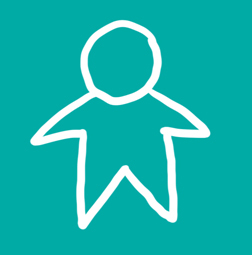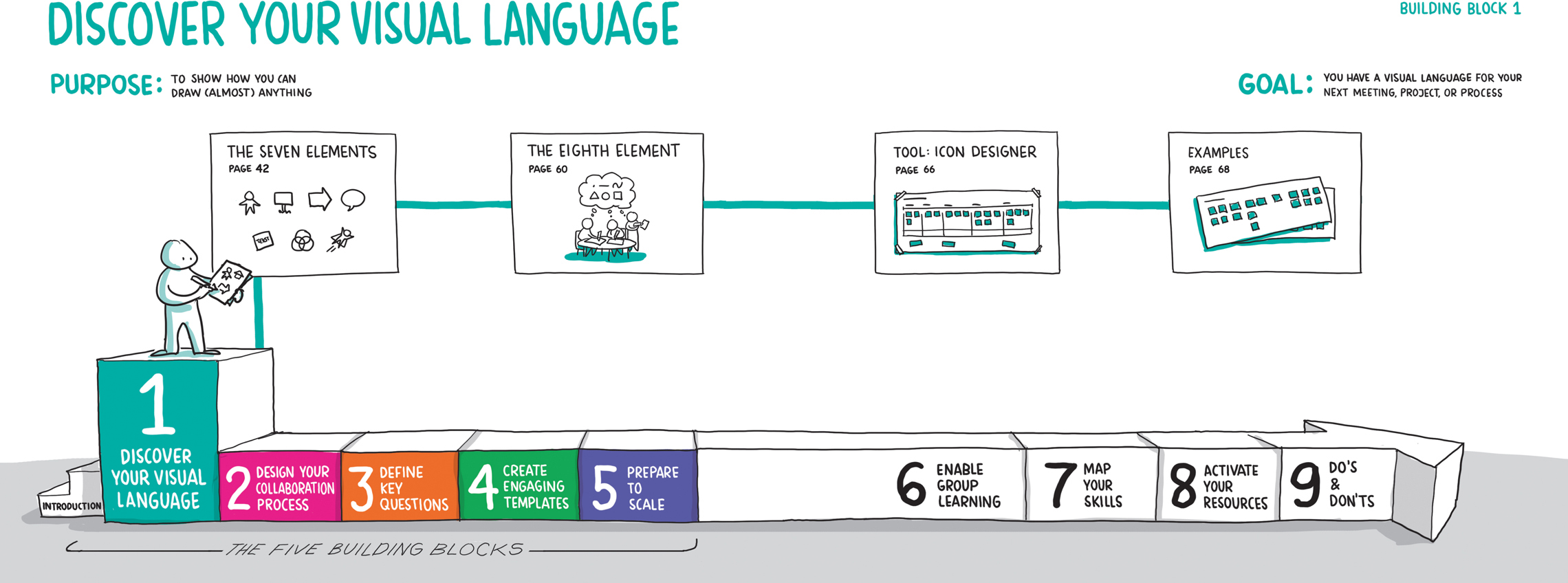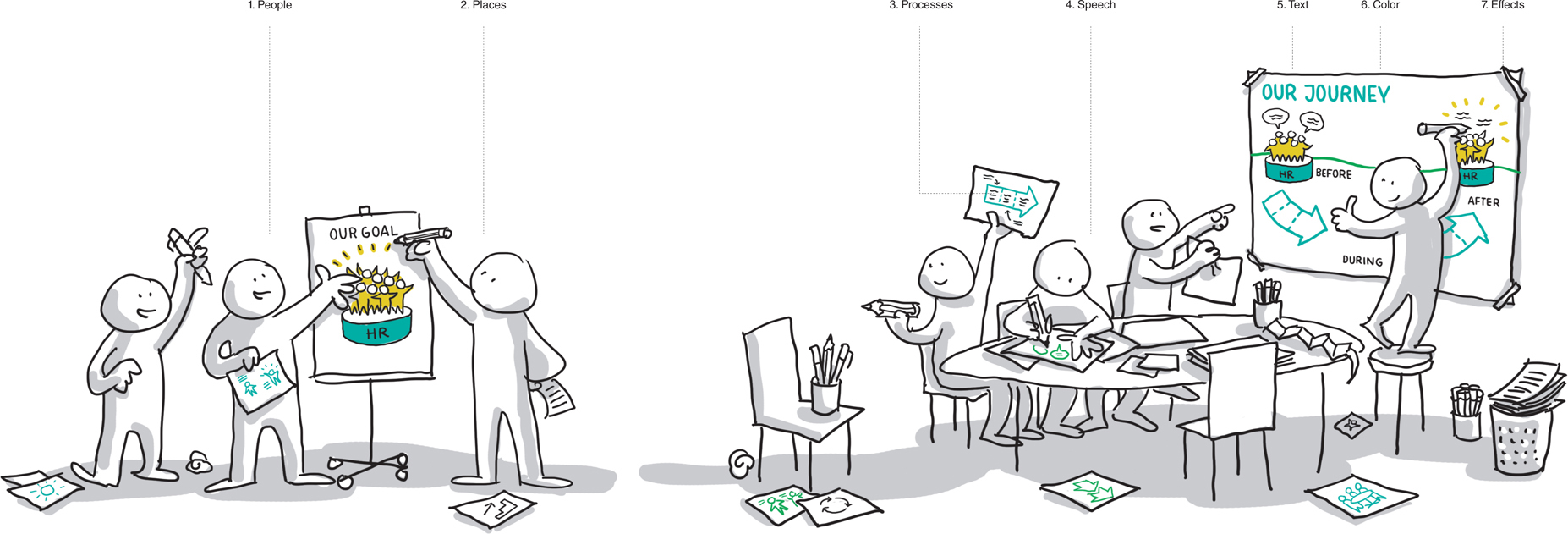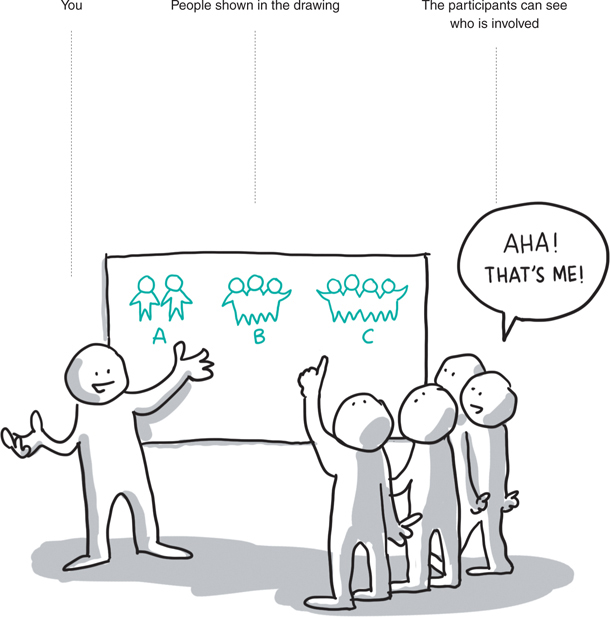1. Discover your visual language


The Seven Elements™
A shortcut to a visual language
Every meeting involves a group of people in a given place, at a given time, to discuss a given subject.
If we translate this formula into a visual alphabet, we can build a visual language to use in meetings and processes. We call this the Seven Elements.
Practice drawing each element as you read through this chapter.


THE SEVEN ELEMENTS
1. People
Show who is involved. We all like to see ourselves represented. We want to know where we fit in, who else is involved, and what roles and responsibilities belong to whom.
For drawing people, find a style that is easy for you to draw and easy for others to decipher. Most people are familiar with stick figures.
Try drawing a star figure too. It has volume and you can readily adapt it to indicate movement, dress, and attitude. By coloring it, you can show different roles, responsibilities, or profiles in a process.

THE SEVEN ELEMENTS
2. Places ...
Get Visual Collaboration now with the O’Reilly learning platform.
O’Reilly members experience books, live events, courses curated by job role, and more from O’Reilly and nearly 200 top publishers.

